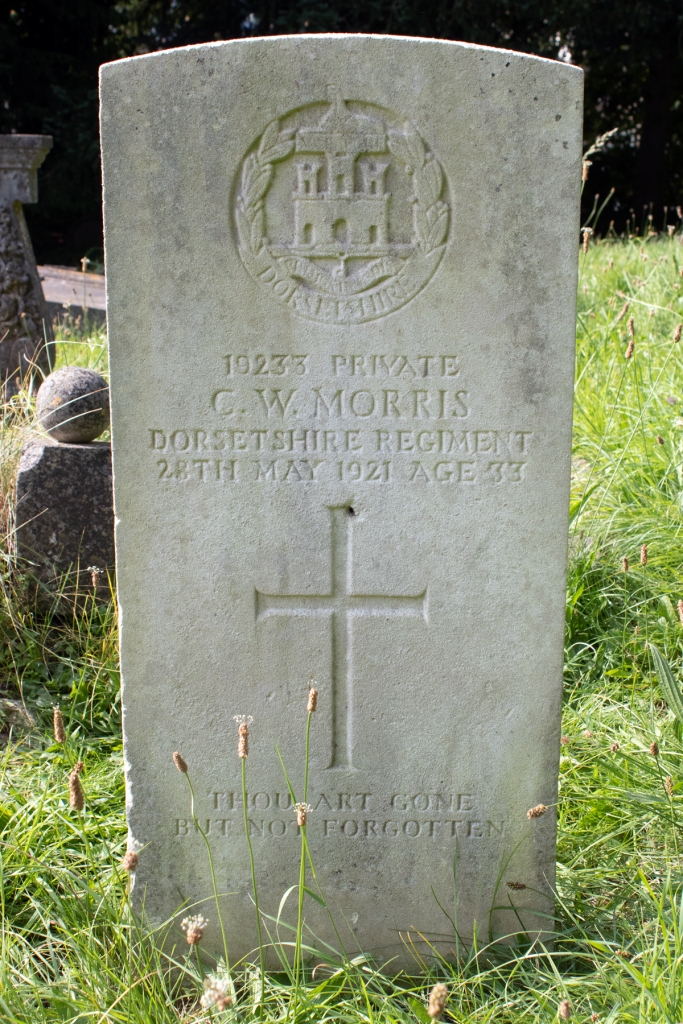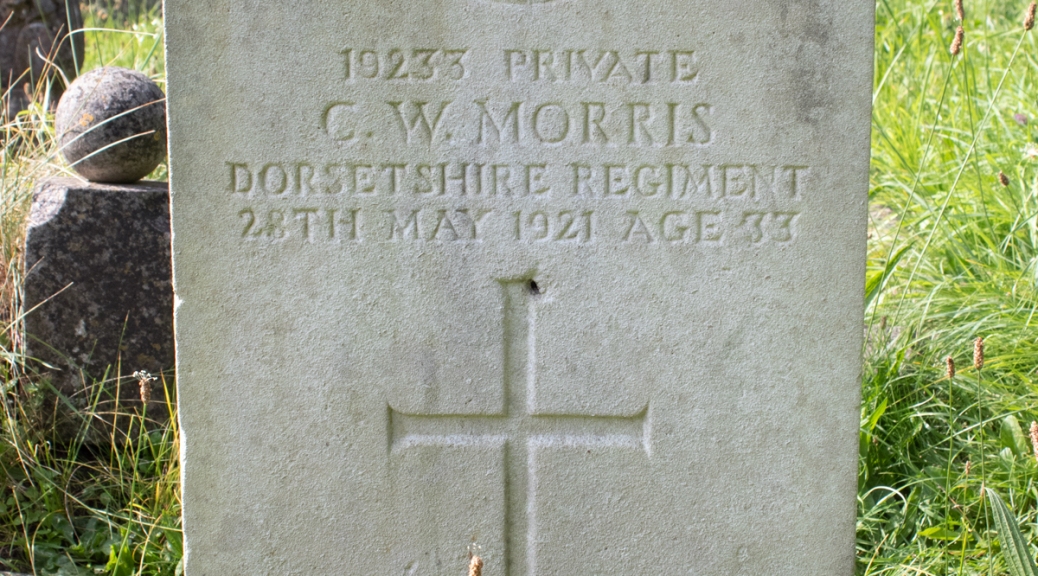
Charles William Morris was born in the summer of 1887, the third of four children – and the only son – to James and Emily Morris. James was a house painter: both he and Emily came from Bath, Somerset, and this is where the Morris family were born and raised.
When he completed his schooling, Charles found work as a clerk: by the time of the 1911 census, he was employed by the Urban Sanitary Authority. Only two of the children were still living at home by this point, and so James and Emily had taken in a boarder, 25-year-old motor engineer Zackarias MacPherson Jackson, to bring a little more money in.
When war was declared, Charles quickly stepped up to play his part. A later newspaper report provides an insight into his service:
The death occurred on Saturday midnight, at 11, Margaret’s Buildings, Hedgmead, of Mr Charles W Morris, at the age of 33. Previous to joining the forces in 1914, he was a member of the Coleford (Somerset) Cricket Club. Joining the North Somerset Yeomanry as a trooper, he went to France, afterwards being transferred to the 5th Dorsets (Cyclist Corps). Eventually he was taken prisoner and was in Germany for two years suffering great hardships. On his return to his native city he joined the St Stephen’s Rugby FC. He was a member of the Walcot Liberal Club, and at the time of his death was employed by his brother-in-law (Mr Z McJackson [sic], motor engineer). Another brother-in-law us Mr W Hollick, headmaster of Coleford schools, and formerly an assistant master at Holy Trinity School, Bath.
The funeral took place at Locksbrook Cemetery on Thursday. The deceased was extremely well known in the neighbourhood in which he resided, and quite a large number of friends attended the cemetery to pay their last respects.
Bath Chronicle and Weekly Gazette: Saturday 4th June 1921
Zackarias had married Charles’ younger sister, Gladys, in 1915, the one time lodger having literally become a member of the family.
Charles William Morris died on 28th May 1921, through causes unknown. He was laid to rest in a peaceful corner of the sprawling Bath cemetery.





















